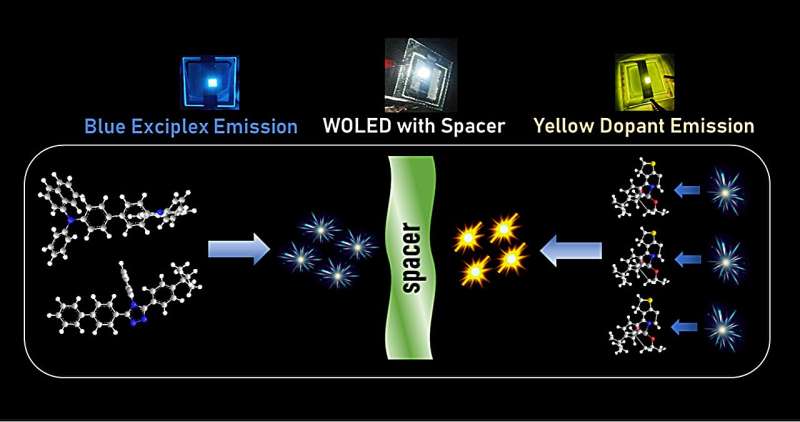This article has been reviewed according to Science X's editorial process and policies. Editors have highlighted the following attributes while ensuring the content's credibility:
fact-checked
proofread
Exciplex route to white organic light emitting diodes: The role of a spacer layer

Organic light emitting diodes (OLEDs) have matured to commercial level. Yet, their widespread market adoption is hindered due to high costs and complicated device architecture. Researchers are actively exploring innovative device engineering strategies to circumvent these issues.
Narayanan Unni and co-workers have tried to address the above challenges by exploiting a concept called exciplex. The work titled "Blue emitting exciplex for yellow and white organic light-emitting diodes" was published in Frontiers of Optoelectronics.
Exciplex emission is possible at the interface of two different materials which may not be luminescent themselves. This provides an opportunity to use relatively cheaper materials instead of costly fluorescent or phosphorescent emitter materials. They have shown that blue electroluminescence is possible from a blend layer of a hole transport material and an electron transport material.
A balanced yellow emission along with the blue emission would lead to white emission. The researchers devised a technique wherein a spacer layer was used between a blue emitting layer (blue exciplex) and a yellow emitting layer (blue exciplex with yellow dopant).
The key requisite for this spacer layer is that it should be capable of conducting electrons and holes with the same ease; in other words, it should be ambipolar. The balanced carrier flow to both blue emitting unit and yellow emitting unit ensured white emission. Also, this architecture reduces the number of layers compared to a standard white OLED with red, green and blue emitting layers.
Better ambipolar properties of a spacer layer which is tailored for the blue and yellow emitting layers would ensure a better white light emission according to the authors.
More information: Kavya Rajeev et al, Blue emitting exciplex for yellow and white organic light-emitting diodes, Frontiers of Optoelectronics (2023). DOI: 10.1007/s12200-023-00101-3
Provided by Higher Education Press





















